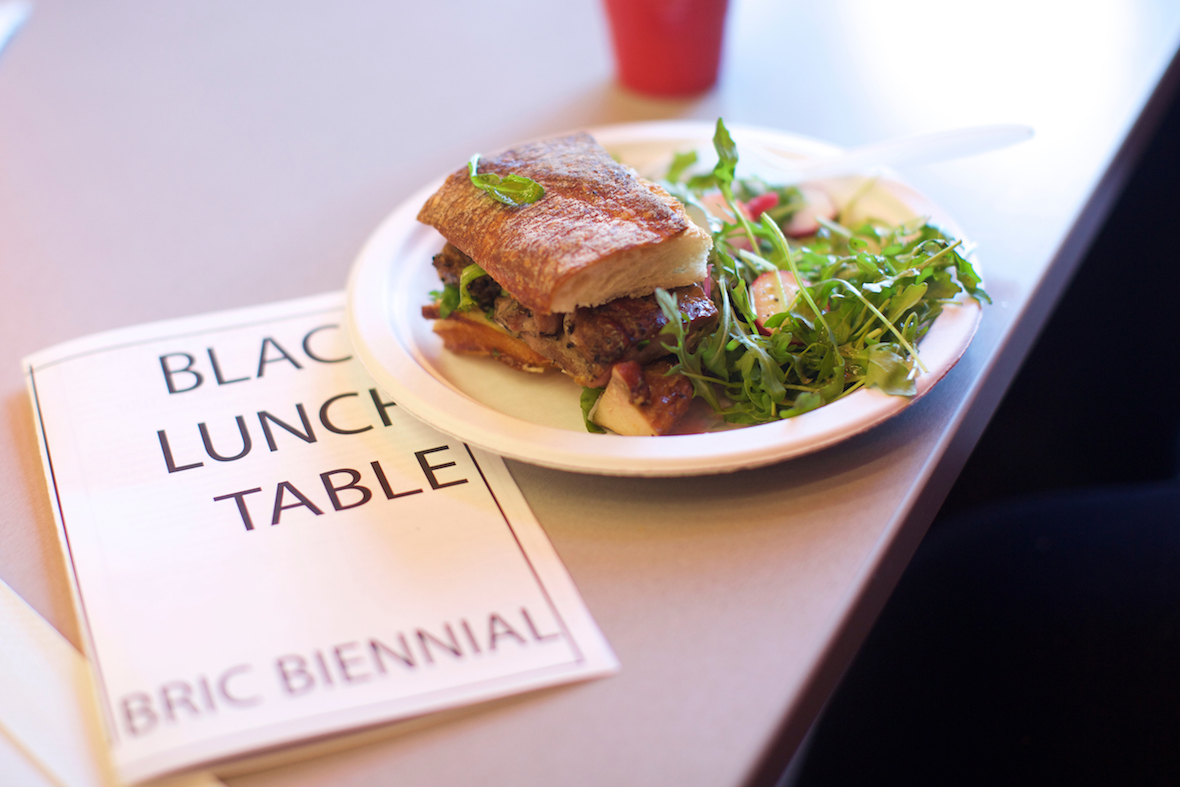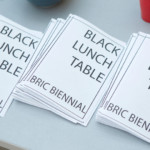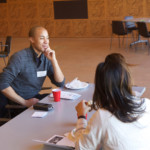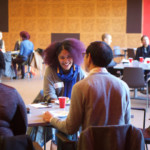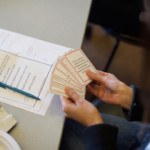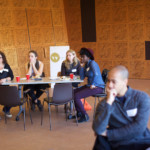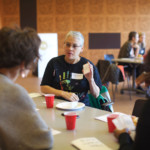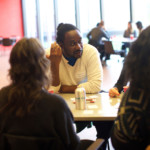
As much as food is something that we talk about, it is also something that we talk over. It can bring us together and teach us who we are.
I learned that lesson at the tables of the cafeteria at my small liberal arts college. Coming from Bed-Stuy, there was more than a little culture shock moving to small New England town, but in a small section of the dining hall, there was an oasis where I wasn’t the only one like me. The lunch table served as the center of the black community: It was the place where we gathered daily to talk and debate about classes, music, politics and other current events.
Seen at schools and gathering places across the country, the phenomenon and symbol of the “black lunch table” has long been the source of racial study and debate (I recommend this for further reading).
In 2005, artists Jina Valentine and Heather Hart officially formed Black Lunch Table: an event series aimed at engaging people of color in critical dialogue with one another on topics directly affecting their community.
Valentine and Hart recently brought the Black Lunch Table to Brooklyn with events at the Weeksville Heritage Center and BRIC House Stoop. One of the events entitled “Black Lunch Table: Black Lives Matter” brought invited guests and members of the public together to discuss issues of public safety, police relations and health and well-being.
At Weeksville, Valentine and Hart provided salad and sandwiches from Bed-Stuy’s Peaches and assigned guests to seats at lunch tables. Each table was given a recorder to document the ensuing conversation and a deck of cards to facilitate the discussions.
In the future, the hosts hope to catalog all the discussions online in order to grow the conversations nationwide. For now, both Hart, based in New York, and Valentine, a professor at UNC–Chapel Hill, plan to continue hosting Black Lunch Table events locally. Check their website for updates and announcements.








